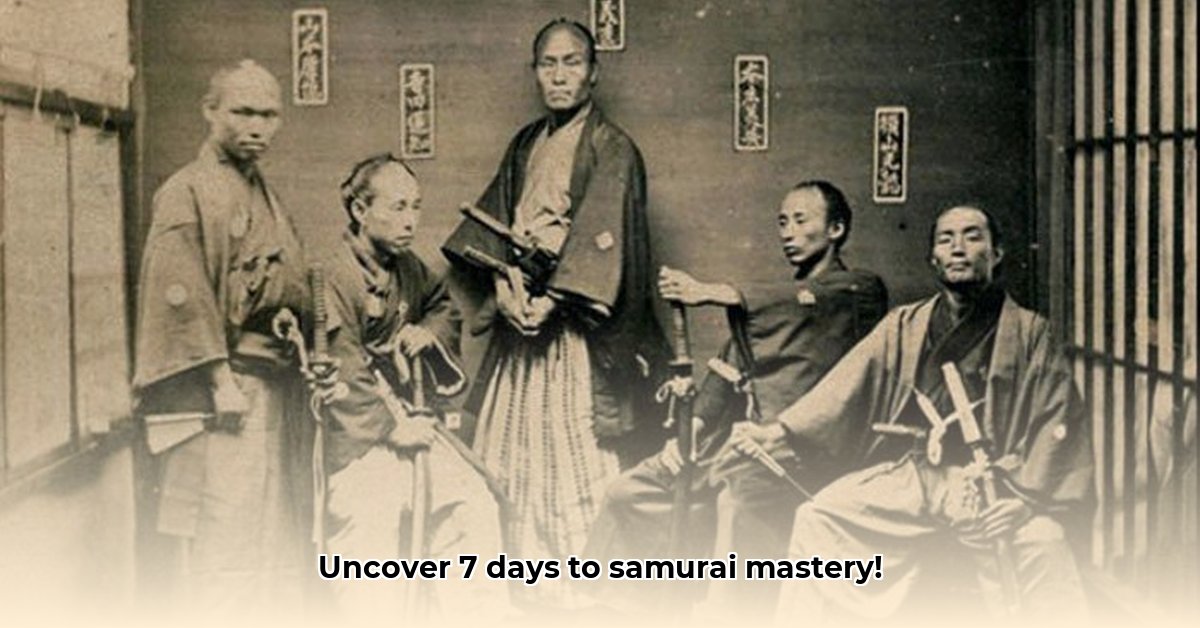
Ready to unlock the secrets of ancient Japanese warrior culture? This seven-day guide will equip you with the vocabulary to understand their fascinating history and culture. We’ll go beyond simple definitions, exploring the nuances and stories behind each word, making this journey both educational and engaging. For a deeper dive, check out this helpful resource.
Day 1: Foundations – Bushi and Senshi
The words "warrior" are often translated as bushi or senshi. While both mean "warrior," crucial differences exist. Senshi is a general term for any skilled fighter. Bushi, however, refers specifically to the elite samurai class, bound by the strict code of Bushido. Think of bushi as a subset of senshi. Mastering this distinction is your first step. How would you describe the difference between a bushi and a senshi in a single sentence? This is a crucial consideration when trying to understand historical accounts.
Day 2: Beyond the Samurai – Specialized Roles
Ancient Japan's warrior world extended beyond the samurai. Shinobi, or ninja, were masters of stealth and deception, contrasting sharply with the samurai's formal warfare. Ronin, masterless samurai, symbolized both freedom and hardship, roaming after losing their masters. Each term carries a unique narrative weight. Can you imagine a scenario contrasting a samurai and a ronin? This exercise will help you internalize the differences in their roles and motivations.
Day 3: Weapons, Armor, and the Art of War
Let's explore the tools of the trade! The katana (iconic curved sword), wakizashi (shorter sword), and tanto (dagger) comprised the samurai's arsenal. Their armor, yoroi, provided protection. Understanding this vocabulary offers insight into battlefield strategies. What tactical advantages did the length of the katana offer in combat compared to other weapons? The answer lies in understanding the cultural context of ancient Japanese warfare.
Day 4: Bushido – The Samurai Code
Samurai were more than skilled fighters; Bushido, their code of conduct, governed their lives. Key terms include meiyo (honor), chugi (loyalty), and gisei (self-sacrifice). These values shaped their actions. How did Bushido's emphasis on honor influence samurai behavior on and off the battlefield? This question is crucial to understanding their motivations and the complex social dynamics of the time.
Day 5: Society and Structure – Power Dynamics
Ancient Japanese society, especially the warrior class, was highly structured. Daimyo (powerful feudal lords) and shogun (military dictators) held positions of authority. Family lineage shaped the social landscape. What were the consequences of defying the social hierarchy in feudal Japan? Understanding the social structure provides context for the individual warriors we’ve studied.
Day 6: Practice Makes Perfect – Putting It All Together
Now, it's time to test your knowledge! We'll use exercises to reinforce your learning: matching words to definitions, translating short sentences, and creating short narratives. Active engagement is key to mastering this vocabulary. How many sentences can you write using at least three terms learned in this course? Remember, consistent practice is essential to fluency.
Day 7: Continuing Your Journey
Your journey doesn't end here. We'll provide a list of resources for continued learning: books, websites, and documentaries (specific links will be provided in the final version). There's always more to discover, ensuring continued engagement with this rich historical period. What topic within the world of ancient Japanese warriors will you be exploring next? Your enthusiasm will lead to ongoing learning and discovery.